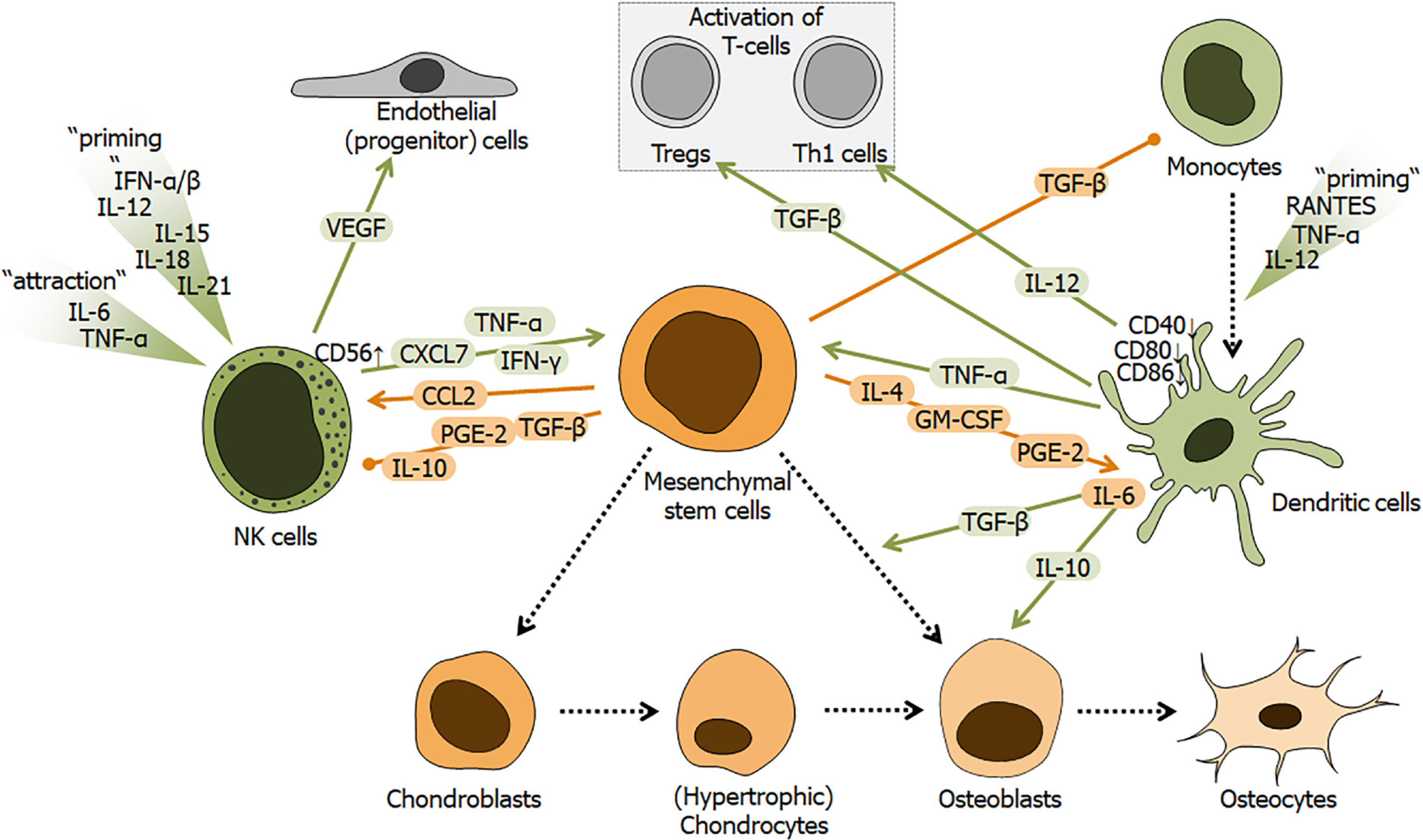Copyright
©The Author(s) 2021.
World J Stem Cells. Nov 26, 2021; 13(11): 1667-1695
Published online Nov 26, 2021. doi: 10.4252/wjsc.v13.i11.1667
Published online Nov 26, 2021. doi: 10.4252/wjsc.v13.i11.1667
Figure 5 Schematic overview of the regulatory role of dendritic cells and natural killer cells during fracture healing.
Fracture healing is affected by factors secreted / released from mesenchymal stem cells (MSCs), natural killer cells (NK cells) or monocyte-derived dendritic cells. Factors derived from NK cells and dendritic cells are marked in green. MSC-derived factors are marked in orange. NK cells are attracted and primed by local increase in factors, e.g., tumor necrosis factor alpha (TNF-α), interferons alpha and beta (IFN-β), and interleukin 6 (IL-6), IL-12, IL-15, IL-18, or IL-21. NK cells, depending on their activation status, secrete factors, e.g., TNF-α, interferon gamma, vascular endothelial growth factor, or pro-platelet basic protein (PPBP or CXCL7). Dendritic cells differentiate from monocytes in the presence of TNF-α, IL-12, and C-C-motif chemokine ligand 5 (RANTES or CCL5). Dendritic cells then secrete factors, e.g., TNF-α, transforming growth factor beta (TGF-β), and IL-10 and IL-12. Both cell types are strongly affected by factors secreted/released from MSCs, e.g., C-C-motif chemokine ligand 2 (CCL2), prostaglandin E2 (PGE2), granulocyte-macrophage colony-stimulating factor, TGF-β, or IL-4, IL-6 and IL-10. Colored arrows depict stimulation and blunt end lines inhibition. Dashed black arrows indicate differentiation processes. CD: Cluster of differentiation; NK: Natural killer; TNF-α: Tumor necrosis factor alpha; IL: Interleukin; IFN-α: Interferon alpha; IFN-γ: Interferon gamma; VEGF: Vascular endothelial growth factor; CCL: C-C-motif chemokine ligand; TGF-β: Transforming growth factor beta; PGE2: Prostaglandin E2; GM-CSF: Granulocyte-macrophage colony-stimulating factor.
- Citation: Ehnert S, Relja B, Schmidt-Bleek K, Fischer V, Ignatius A, Linnemann C, Rinderknecht H, Huber-Lang M, Kalbitz M, Histing T, Nussler AK. Effects of immune cells on mesenchymal stem cells during fracture healing. World J Stem Cells 2021; 13(11): 1667-1695
- URL: https://www.wjgnet.com/1948-0210/full/v13/i11/1667.htm
- DOI: https://dx.doi.org/10.4252/wjsc.v13.i11.1667









